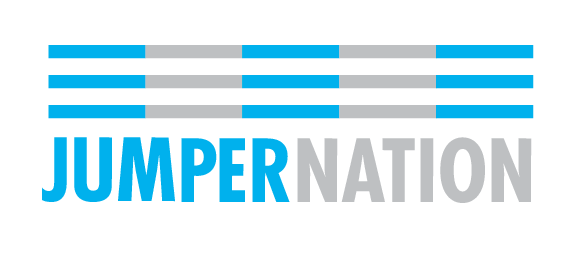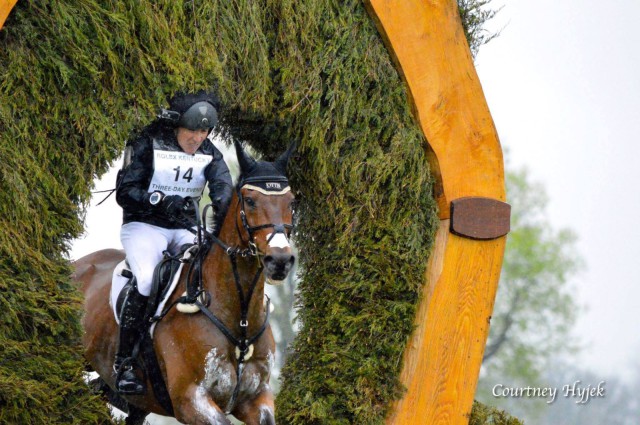In this excerpt from his book The Riding Horse Repair Manual, Pan American Games Team USA gold medal winner Doug Payne tells us how to analyze where you are now so you can get where you want to go.

Photo by Amy Dragoo.
Riding is a game, and regardless of how forgiving your horse is, he will be constantly exposing weaknesses in your foundation and training system. Problems you see in your horse are a reflection of your training. Stay objective and slightly removed from the situation; any emotional response will be counterproductive. Think of all these so-called “problems” as challenges alone. Finding the solution to the puzzle presented by your horse can be addictive!
Before you embark on dealing with any horse problem, you need to take an honest look at your horse and at your own current skill set.
Evaluating the Horse
Ask Yourself:
Is your horse’s “problem” physical? I strongly recommend having your trusted veterinarian out to the farm for a basic soundness exam to rule out any physical issues or to give you a better idea of treatments that could improve the horse’s situation. Upon the conclusion of this assessment, you can expect to have an idea from your vet of any limitations your horse might have. It might seem like common sense: There is no reason to ask a horse to do something he is not physically able to perform. After you’ve ruled out any medical diagnosis, you can move on to the problem at hand and look to correct it.
Does your horse’s behavior issue have its roots in a missing component of his training foundation, or does it stem from “attitude”? First, maybe there was some sort of building block skipped or rushed (a foundation flaw) that caused the horse not to completely understanding what is being asked. Think of this like a person who doesn’t entirely comprehend a language—it just happens to be the language of the equestrian sports.
Second, when the horse has an “attitude,” the behavior can have more “malicious” roots, since the horse fully understands what is being asked and is simply ignoring you, or worse yet, actively working against you. You might ask, aren’t they related? Of course they are, but I think the real distinction is the horse’s disposition.
Evaluating the Rider
Ask Yourself:
Can you handle the horse’s problem? I want to help you develop a concrete plan about which challenges you are able to attack alone; which ones you may need help with; and which might just be better left to a professional trainer. Regardless, the way to truly improve is to be completely open and honest with yourself: Only through a thoroughly objective assessment will you be able fix the issues that could limit your success. So to begin, do your riding ability and confidence level enable you to safely address your horse’s issue?
Do you have a personal goal in mind? If not, one needs to be established. Where would you like to be with horses in two weeks, two months, or two years down the road? It is very important to set attainable goals; without them it’s very easy to flounder about without improving.
Are you mentally prepared to improve? A change in your habits or expectations may be as intimidating as riding your bucking horse or worse! In order to improve you must set up realistic goals and go after them with conviction. Don’t sell yourself short. You have the ability to improve so go out and get it!
Are you at the right barn? Sometimes barn dynamics can hinder your progression. I find a lot of people get stuck in their barn’s hierarchy of rider ability. Keep an eye on your goals, and don’t let anyone stop you. You can achieve more.
With your goal in mind and the environment ripe for improvement, is your horse truly able to reach that goal with you? When your answer is “Yes,” this is ideal! Keeping your goal in mind and using the specific skills needed to succeed, get out to the barn and start working!
When your answer is “Maybe,” it is probably because very often, like me, you will not be exactly sure how far a particular horse can go. As long as you enjoy riding him every day and you are progressing, keep working. And when progress slows to a crawl, try to figure out what’s stopping it. If it’s the horse’s talent alone, and your goals are to achieve more, then it might be worth thinking about moving on to another horse.
When your answer is “No,” it is definitely time to think about getting another horse. I’m the first to say that if you are happy where you are and just looking to ride him, great! However, even though frustrated with his limitations, many people are so attached to their horse, they give up trying to achieve their goal, and even get turned off riding, which is a great shame. There are plenty of people out there willing to give your horse a fabulous home and love him as much as you do. Allow him to move on, so you can achieve your goals with another horse.
Are you willing to make the best of the opportunity you have with your horse? When your answer is “Yes,” get ready to work hard! Progress will come to those who work the hardest and smartest. It’s not easy, but well worth it. When your answer is “No,” again, it might be time to look for a different partner. There are an unlimited number of horses available.
Do you know when it’s time to go to a professional trainer for lessons? Limited resources, stubbornness, or a reluctance to be critiqued may make regular lessons difficult, but the benefits are well worth the cost!
What do you need to improve before dealing with the horse’s specific problem(s)? Every horse has some particular weaknesses that will limit his progress unless you can handle the issues. Perhaps you have dealt with a similar horse in the past with success? If not, do you have the skills to tackle the job? It’s a good idea to figure out which of your skills need further refinement. Ask your instructor to whittle down your riding flaws to a “Top Five” list. At the same time, do a quick self-assessment and write down your own Top Five skills that need improvement. Combine these lists, and make it your mission to reduce this new list to zero!
Do you have the desire—and time—to dedicate to solving your horse’s issues? For some horses to succeed, a significant amount of time is required. It can mean you’ll need to ride them six or seven days a week.
Is fear limiting your potential? Both these last two questions must be answered before embarking on this journey. If either answer is not in the affirmative, maybe you should consider a different horse—one that knows the ropes a bit better so that you can enjoy your limited time in the saddle without seriously testing your confidence every time you get on.
This excerpt from The Riding Horse Repair Manual by Doug Payne is reprinted with permission from Trafalgar Square Books (www.horseandriderbooks.com).










 About Doug Payne
About Doug Payne





















